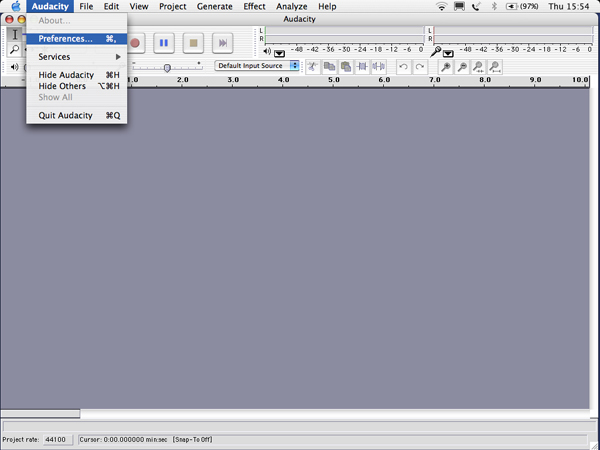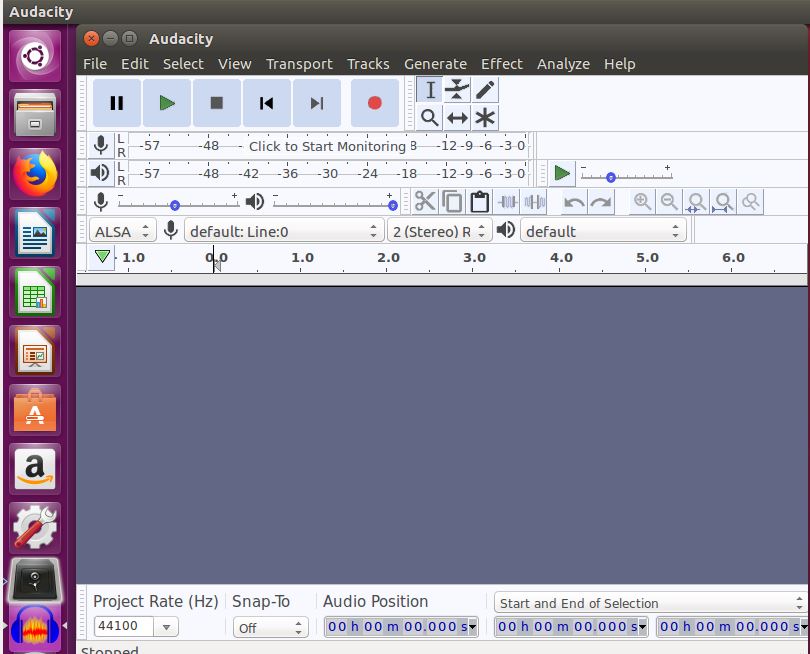Close all cmd or terminal windows including git for windows. Otherwise you may later see errors; open a new Windows cmd terminal (Windows + R keys and then type cmd) type cd projects and enter key; run build script by typing build-audacity.cmd and enter. Come back later - it will take at least 10 minutes (all the yellow warnings can be ignored). Cmd+Click on Audacity and choose 'Open', this permanently saves Audacity as an exception so you can open it despite it being from an unidentified developer. You can use `cau` in Alfred to open the app correctly. A terminal window will open up first and then Audacity will open. Closing the Terminal window will close Audacity. Install Audacity 3.0.0 via Flatpak: Firstly open terminal from system app launcher. When it opens, run following commands one by one. 1.) For Ubuntu 18.04, add the PPA for updated version of Flatpak framework: sudo add-apt-repository ppa:alexlarsson/flatpak && sudo apt update. Audacity is a free, open source sound recorder and editor that runs on Linux. With Audacity, you can record audio from microphones or other playback devices, mix, edit, and adjust the recordings, edit existing sound files, and output the results to a wide variety of sound file formats.
If you did not migrate your account yet, visit https://idp-portal-info.suse.com/

Tested on openSUSE
Recommended articles
Related articles
A Free, Cross-Platform Digital Audio Editor

Developer: The Audacity Team
License: GPL
Web: http://audacityteam.org/
- 3Install Audacity
About
Audacity is a free digital audio editor that runs on the GNU/Linux and other operating systems. The source code for Audacity is released under the GNU General Public License. The graphical user interface for the editor has been produced using the wxWidgets library.
Features
- Importing and exporting WAV, MP3 (via the LAME MP3 Encoder, downloaded separately), OggVorbis, and other file formats
- Recording and playing sounds
- Editing via Cut, Copy, Paste (with unlimited Undo)
- Multi-track mixing
- Digital effects and effect plug-ins
- Amplitude envelope editing
- Noise removal
- Support for multichannel modes with sampling rates up to 96 kHz with 24 bits per sample
- The ability to make precise adjustments to the audio's speed, in order to synch it with video, run for the right length of time, etc.
Please refer to the official website to get more information on features.
Install Audacity
Terminal
- Open a terminal
- Gain root permission by running:
- Enter root passsword and then run:

YaST
If you want to install audacity with YaST, please read this page.
External links
Audacity Linux Terminal
Audacity Terms Of Use
If you’ve recently upgraded your Mac to Catalina or Mac OS 10.15.1, you may have noticed that Audacity is no longer working. To get it working, you’ll need to download version Audacity 2.3.3. However, installing and running it normally the way you’ve done it in the past will not be enough. Because of Catalina, Audacity is not able to gain permissions to the microphone inputs. The only way I was able to get it working is to launch Audacity from the Terminal.
Launch Audacity from the Terminal.
Click Ok if prompted to use the microphone.
